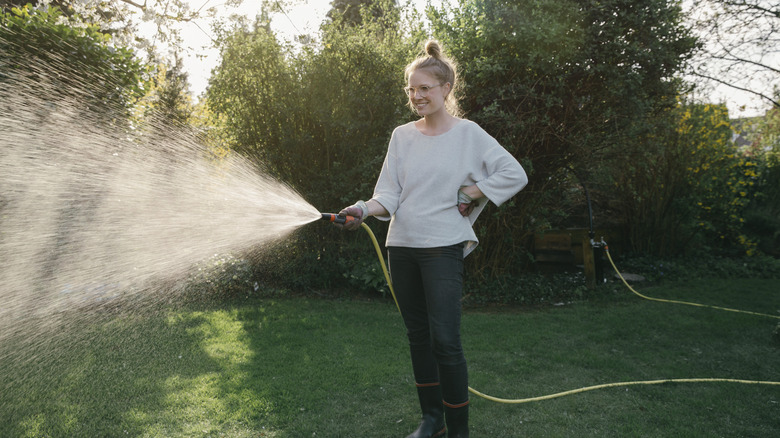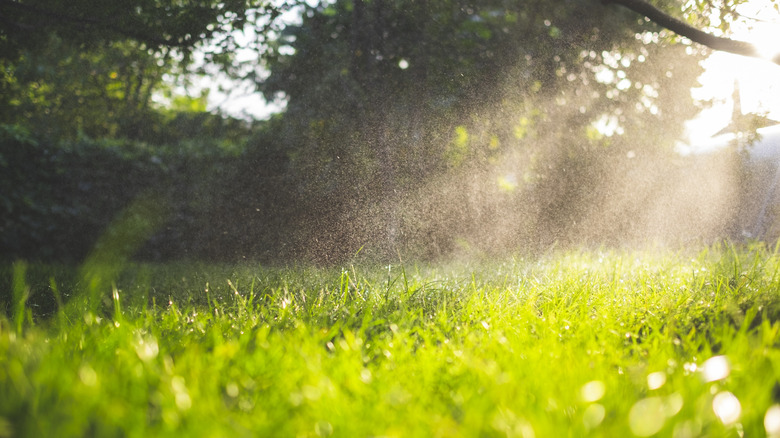This Is By Far The Most Ideal Time To Water Your Lawn For The Healthiest Growth
A well-kept lawn does wonders for a house's curb appeal, and while it may seem like an easy task to maintain decent-looking grass, it can come with unexpected challenges. While you may think it's just a matter of consistent watering, good fertilizing, or regular mowing, factors like weather, soil, and even watering at the incorrect time of day can make the most cared-for yard look like it's struggling. Before you run to the store to arm yourself with all the best lawn care tools or consider switching up your fertilizer, though, pause and try to tackle the easiest solution that'll give your lawn a boost: Watering at the most optimal time of day.
Many may be surprised that the time they water, whether it be from a hose or sprinklers, can drastically impact how your lawn reacts. The early morning window, from 6:00 to 10:00 a.m., has proven to be the best time of day to execute your daily watering rounds. The reason is quite logical: In the early morning, temperatures remain somewhat cool and weather patterns (like wind) are less robust. The sun is also lower and weaker than it is during the afternoon. This gives your lawn ample opportunity to absorb lots of water into its roots before heat, sun, and other environmental factors cause water to evaporate more rapidly. Simply put, you're giving your lawn a fighting chance to get moisture down below the surface to the roots in the soil before the lawn dries off.
Why it's worth watering your lawn in the early morning
Watering your lawn in the early morning does more than just give the roots a decent drink; it also helps prevent your lawn from catching diseases borne from oversaturation. Since you're giving your lawn plenty of time to dry off during the day post-watering, it's also less likely to get diseased from staying wet. This is one of the challenges with watering at other times of the day (particularly overnight). Without a good window of time for your lawn to dry off, water will sit on the surface, especially if ample moisture has already been absorbed by the roots, causing diseases like fungal growth or issues like waterlogging and flooding.
The opposite is true for watering your lawn when the sun is too high and the heat too intense — water can't penetrate the soil, and it won't stay long enough on the grass to provide any significant moisture. You'll need to use more water to get the same results as you'd get with less water, earlier in the day. Thus, watering your lawn in that early morning time frame is not just resource-saving, it helps cut your water bill down, too.
Keep in mind, lawn care differs depending on the type of lawn you have, where you are geographically, and whether you're engaging in lawn care before, during, or after a drought. On the whole, though, watering your yard before 10:00 a.m. is an ideal practice to promote moisture retention and prevent over- or under-watering. However, if you need help with best lawn practice, don't be too embarrassed to hire a lawn care company — they'll handle the watering, so you don't have to.

